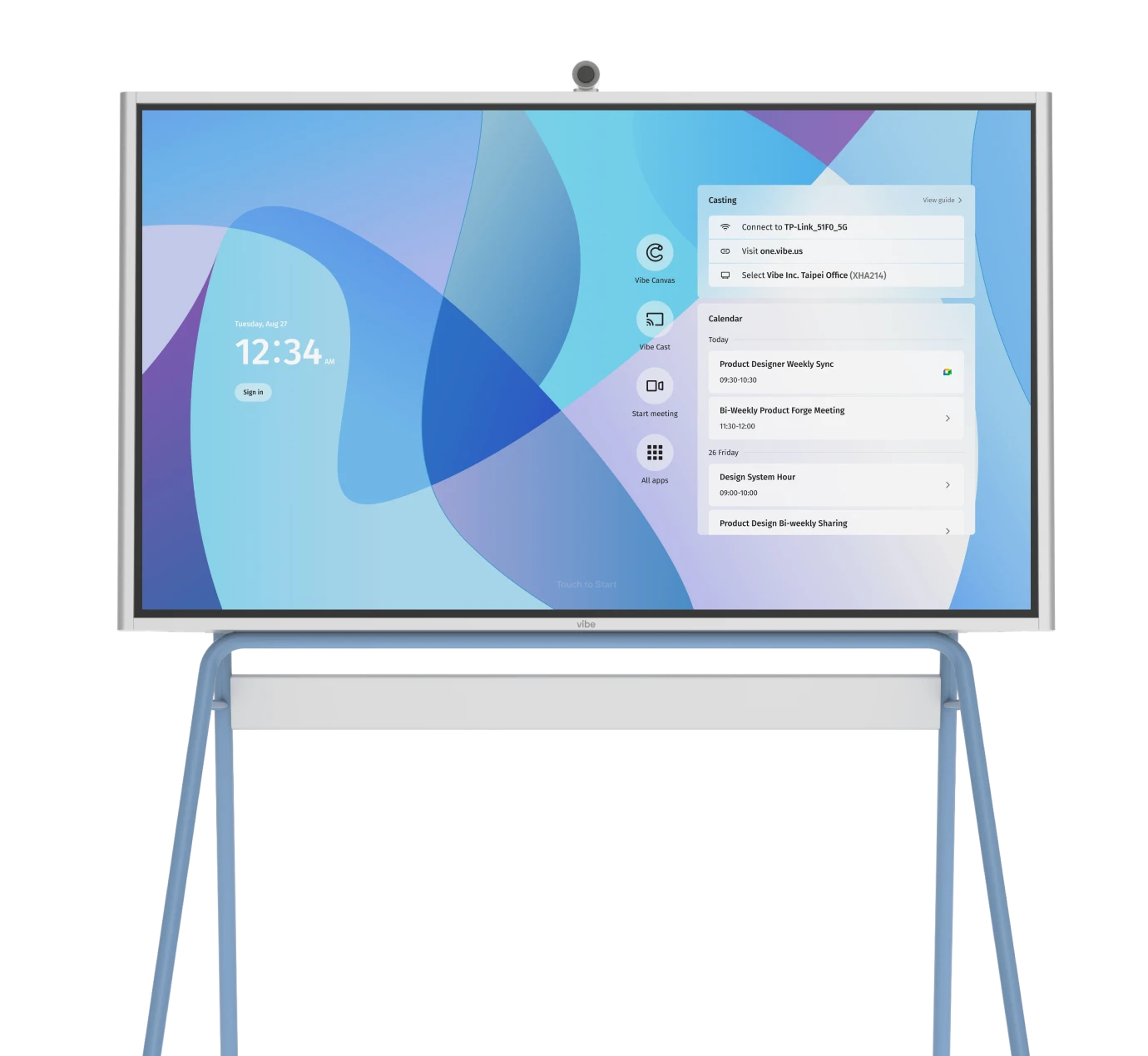By 2025, the average human attention span fell to 8.25 seconds—barely long enough to finish a sentence. With so much noise competing for focus, every moment you hold someone’s attention matters. This is especially true in business, where engagement influences how persuasive and successful you are.
In both live multimedia presentations and digital content, the strongest engagement comes from participation. Interactive formats like polls, quizzes, and visual storytelling drive over 50% higher engagement than passive formats, and with the right tools at your disposal, implementing such formats doesn’t have to be a pain.
This guide explores proven strategies for building two-way conversations and encouraging engagement, ultimately making your audience feel like part of the experience, not just observers.
- Effective audience engagement strategies rely on active participation, not passive consumption.
- Interactive content formats can generate more than 50% higher engagement rates than static posts or slides.
- Understanding audience behavior through data and feedback sharpens content relevance.
- The right mix of channels and creative formats turns engagement into measurable business impact.
1. Understand Your Audience Deeply
Before you can keep people engaged, you have to know who they are and what matters to them. The most engaging messages are built from patterns you’ve already seen—what people ask most often, when they respond, and why they care. A good way to capture that is with quick segment scorecards: one-pagers that outline each audience’s top three pain points, desired outcomes, objections, and decision triggers. You can pull insights from call transcripts, support tickets, or win/loss notes so your messaging reflects what customers actually experience.
Once you’ve built a foundation of insight, put empathy into action. Host a short 60-minute Think/Feel/Say/Do session with your team to capture what your audience experiences at each stage of their journey. Start with a few real customer quotes or observations, then:
-
Vote on the top three themes that stand out in each quadrant.
-
Assign an asset to each one, like a demo clip, checklist, or ROI calculator.
-
Give each asset an owner and a due date, and log everything in your campaign backlog.
Once your insights have names, faces, and stories, every piece of content is more effective. You’ll know exactly which story to tell, what visual to use, and which question to answer first when you lead with empathy.
2. Create Compelling & Interactive Content
Once you know your audience, it’s time to reel them in with content that offers value by addressing their needs. Start with storytelling that answers real questions and solves real problems. When people see themselves in the story, they lean in.
It’s also important to use formats that feel natural to your audience. How-tos, expert interviews, case studies, and success stories rarely miss because they are so relatable and applicable.
When and Why to Use Interactive Presentation Formats
What you ultimately pick may depend on the platform you use, content goals, and the stage of the user journey you are targeting.
-
Polls and surveys: Use them as conversation starters, not checkboxes. A quick poll at the top of a meeting ("What’s the toughest part of your week?") sets tone and gives you real data to work with later.
-
Infographics and visual flows: Think of them as your shorthand. A single timeline or side-by-side graphic can replace a five-minute explanation and simplify data storytelling, which keeps your audience with you instead of glazing over.
-
Live Q&As: Don’t save them for the end when attention’s already fading. Drop short, spontaneous Q&A breaks throughout—two minutes here or there to surface the ideas people actually care about.
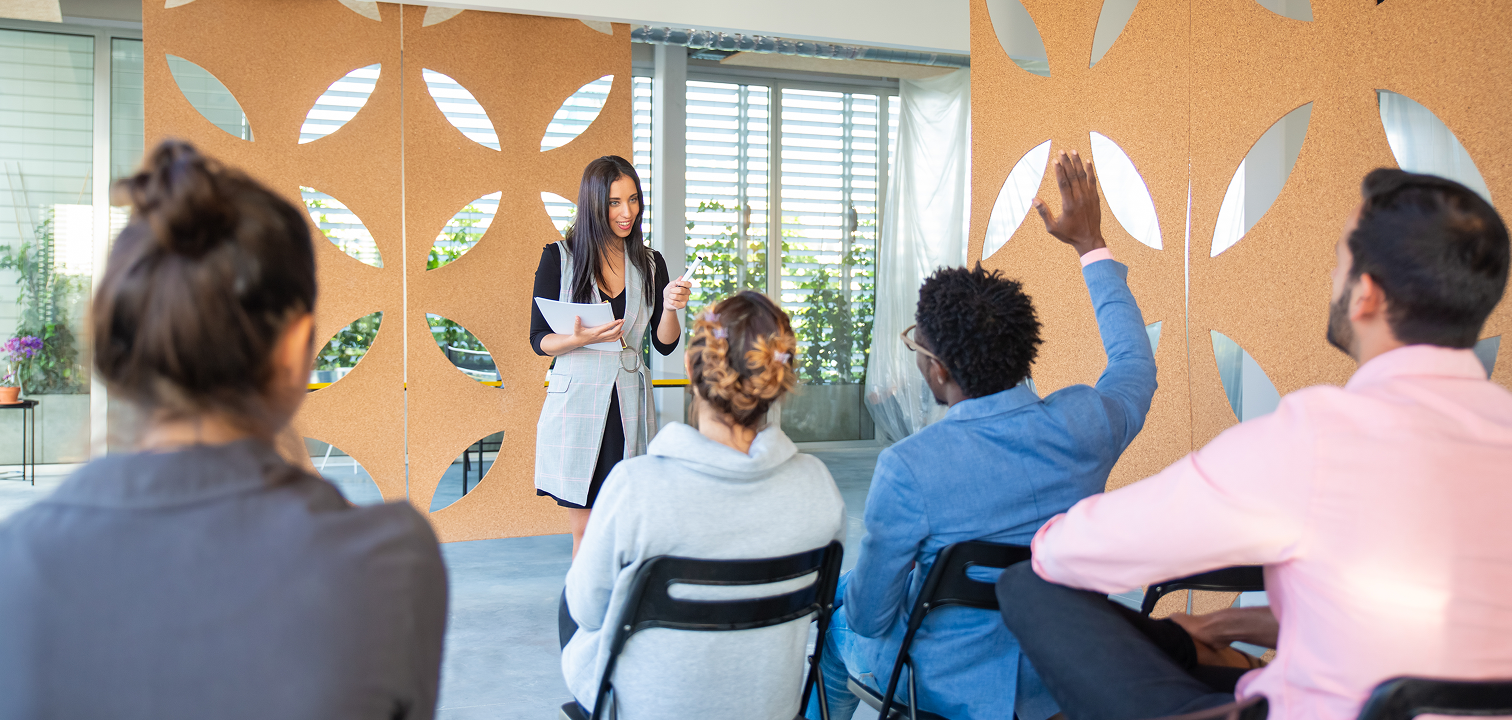
Focus on Short-Form Video
Short-form video gives you quick, powerful touchpoints and helps you learn how to engage with your audience. Create fast explainers or highlight clips that feel native to each platform—and don’t feel like every video has to be edited to perfection. A lot of audiences prefer raw and honest content over staged videos. Use them to demonstrate a feature, answer a quick question, add thought leadership to larger conversations, or share a visual idea that sparks conversation.
Incorporate User-Generated Content (UGC)
Nothing builds credibility like hearing from real people. Ask your community to show how they use your product or apply your ideas, and weave their examples into your own content. Highlight a quote from a customer presentation, share a photo from a workshop, or remix a user’s idea live on screen.
3. Build Two-Way Communication & Community
When conversations feel one-sided, it’s easy to mentally check out. That’s why the best engagement takes a back and forth. Think of engagement in two layers: what happens in the moment and what happens after it’s over. Real-time tactics give your audience a voice right away; long-term communities give them a reason to stick around.
Real-Time Engagement Tactics (for live presentations and webinars)
In live settings, your audience is already halfway to participating—you just have to open the door. Build natural pauses into your session where people can jump in, react, or steer the direction.
-
Use interaction tools with purpose: Polls, emoji reactions, or short Q&A prompts work best when they serve a moment, like clarifying a complex idea or switching gears between sections.
-
Plan for pauses: Kick things off with a warm-up poll to break the ice and set tone. Midway through, let the audience choose what comes next ("Which topic should we dive into?"). Wrap up with a quick sentiment check or open Q&A to close the loop.
-
Moderate actively: Assign a co-host or moderator to surface top comments and questions in real time. When people see their input show up on screen, they know their voice matters.

Building Long-Term Community (for ongoing audience engagement)
Engagement doesn’t end when the event does. You can create a space where people keep building and connecting on their own terms without being prompted. Here’s how to foster that environment:
-
Pick the right platform for your crowd: A Facebook Group works well for broad, open participation. Discord or Slack suits tech-savvy or niche audiences who prefer ongoing, real-time chats. For total control of experience and data, build a branded forum or host community spaces directly within your platform.
-
Define a clear purpose: Give people a reason to show up. Whether it’s a support hub, a space for co-creation, or a peer learning group, clarity helps shape tone and content.
-
Create consistency: Post prompts, run themed challenges, or start weekly check-ins to keep activity flowing. Consistency often matters more than volume.
-
Highlight contributions: Feature standout ideas, spotlight active members, or share quotes from community discussions. Recognition builds loyalty faster than perks.
4. Choose the Right Channels & Mediums
Different platforms offer different ways to engage your audience. Some are especially helpful when it comes to discovery and lead generation, while others are more suited for in-depth discussion. Knowing where your audience spends time and how they like to interact lets you tailor your message to the moment instead of shouting into the void.
Start by matching your goals to each platform’s strengths. Are you trying to build awareness, nurture leads, or start a conversation? Those answers determine both tone and format. Live videos, newsletters, and community spaces can all drive engagement, but each does it differently.
-
Analyzing audience behavior: Look at when and where your audience interacts most. Time of day, preferred devices, and content format all give clues about where engagement will land.
-
Aligning format with intent: Short videos or Reels work for quick visibility; webinars, business presentations, and long-form articles deepen education. Match the format to the level of attention and participation you’re asking for.
-
Balancing immediacy and depth: Some platforms thrive on fast reactions while others reward thoughtful takes. Plan your mix around the tempo your message deserves.
Platform Comparison Table
|
Platform |
Best For |
Content Type |
Engagement Style |
Avg. Response Time |
|
|
B2B professionals |
Long-form articles, industry insights |
Comments, shares |
24–48 hours |
|
|
Visual & lifestyle brands |
Stories, Reels, carousel posts |
DMs, story reactions |
1–4 hours |
|
YouTube |
Educational, evergreen video |
Tutorials, product explainers |
Comments, subscriptions |
48–72 hours |
|
|
Retention & nurturing |
Newsletters, personalized content |
Click-throughs, replies |
12–24 hours |
|
Webinars |
Deep engagement & education |
Interactive sessions, demos |
Live chat, polls, Q&A |
Real-time |
|
TikTok |
Fast reach, Gen Z audiences |
Short-form, trend-driven content |
Likes, comments, duets |
<1 hour |
5. Measure What Matters & Refine Continuously
Tracking the right metrics shows you what’s connecting and what’s just making noise. Focus on metrics that match your intent. Are you trying to reach more people, hold their attention longer, or inspire them to act? Each requires a different lens.
Awareness Metrics
These show how many people see your content.
-
Metrics: Reach, impressions, and video views.
-
How to track: Use platform analytics, UTM tags, and tools like Google Ads or social dashboards.
-
Benchmarks: Around 1,000+ impressions per LinkedIn post signals solid visibility.
-
When results dip: Revisit your headlines, hashtags, ad targeting, visuals, or posting times—attention often hinges on the first few seconds.
Engagement Metrics
These tell you how actively people are participating.
-
Metrics: Time on page, comments, shares, and click-through rate (CTR).
-
How to track: Review Google Analytics and native platform insights; check email CTR for deeper signals.
-
Benchmarks: CTR above 2–3% or average time on page over one minute indicates interest.
-
When results dip: Rework your visuals, simplify your calls to action, or test new content formats to keep people interacting.
Conversion Metrics
This is where you can track movement towards a desired action.
-
Metrics: Demo sign-ups, purchases, or qualified leads.
-
How to track: Use CRM tools, event tracking, and conversion pixels to tie outcomes back to engagement points.
-
Benchmarks: A 5–10% conversion rate from engaged leads is common.
-
When results dip: Audit your landing pages, streamline forms, and clarify offers—friction kills momentum.
Specialized Engagement Tactics for Specific Scenarios
Once your foundational audience engagement strategies are working, layer in tactics that fit your audience type, campaign goals, and platform style. These approaches add variety and give engagement a creative boost without reinventing your process.
Influencer & Partner Collaborations
Partnerships extend reach and build instant credibility—especially when your message comes from someone your audience already trusts.
-
When: Launching a new product, expanding into a new segment, or entering a conversation where you need social proof.
-
How: Co-host live Q&As, webinars, or short-form video series with partners who share your audience. Lean on micro-influencers for authenticity and macro voices for scale. Choose collaborators whose tone complements your own so the partnership feels natural, not transactional.
Gamification
Play is one of the fastest ways to build participation. Adding a sense of challenge turns passive followers into active participants.
-
When: Running community challenges, loyalty programs, or campaigns that reward repeat engagement.
-
How: Create interactive quizzes, polls, or visual communication challenges that recognize progress. Simple systems like badges, shoutouts, or mini leaderboards spark friendly competition and keep people coming back.
Live Workshops & Hybrid Collaborative Events
When you want attention and participation to meet in the same room, even during virtual meetings, workshops are the way to go.
-
When: Hosting trainings, brainstorms, or onboarding sessions that rely on contribution, not just listening.
-
How: Use tools like digital whiteboards to collect ideas, annotate visuals, and let attendees vote or sketch alongside you. Shared creation keeps focus high and makes everyone feel invested in the outcome.
Augmented & Virtual Reality Experiences
Immersive content creates an experience people remember instead of another ad they scroll past.
-
When: Introducing a complex product, showcasing design or spatial experiences, or launching a high-visibility campaign.
-
How: Build lightweight AR demos or 360° tours that work across web and mobile. Immersive storytelling helps audiences grasp value instantly—no pitch required.
The Psychology Behind Audience Engagement Strategies
Even the best strategy falls flat without understanding why people choose to engage. Great communicators build on simple human instincts—curiosity, recognition, and belonging.
-
Reciprocity: When people feel acknowledged, they’re more likely to give attention in return. Respond to comments, highlight audience ideas, and share user content to reinforce that interaction goes both ways.
-
Social proof: People join where they see others already participating. Testimonials, active chats, and visible reactions show your brand is worth engaging with.
-
Curiosity gap: Teasing what’s next keeps people leaning in. Posing an open question or hinting at an outcome creates a natural pull to keep watching or reading.
-
Commitment and consistency: Small actions build bigger ones. Encourage micro-interactions like poll votes that make larger asks, like sign-ups or purchases, feel like the next logical step.
-
Scarcity and urgency: Limited access or time-bound offers push people to act quickly. Use it sparingly and honestly for things like early registrations or event exclusives.

Common Engagement Strategy Mistakes (and How to Fix Them)
Recognizing where engagement tends to break down helps you stay ahead of the curve and keep your audience’s attention where it belongs—on you.
-
Mistake 1: Asking for engagement without giving value first
A "comment below" callout only works if you’ve earned it. Share something worth reacting to—a useful insight, quick win, or honest take—and your audience will naturally want to join in.
-
Mistake 2: Reusing the same tactic across every platform
Copy-pasting one post everywhere flattens the experience. Adapt tone and format to each channel’s culture. What lands on LinkedIn won’t feel right on TikTok, and that’s a good thing.
-
Mistake 3: Tracking vanity metrics instead of meaningful ones
Likes and impressions don’t tell you what’s working. Prioritize measures that connect to outcomes like return visits, conversions, or sentiment shifts.
-
Mistake 4: Treating engagement as one-sided
If you only reply when it’s convenient, people notice. Schedule time to respond, react, or join the discussion consistently. Presence builds trust faster than polish.
-
Mistake 5: Automating the human out of it
Over-automation sounds hollow. Use tools to stay organized, but keep space for real voices, such as quick replies, handwritten notes, or on-camera shoutouts. That authenticity can’t be faked.
Vibe Board S1: Deeper Engagement Powered By Smart Tools
Great engagement starts with tools that keep up. The Vibe Board S1 turns any session, whether it’s live, hybrid, or on the go, into an interactive experience. From team workshops to a polished client presentation, the S1 keeps everyone in the same creative flow.
Its infinite canvas and 20-point multi-touch screen make collaboration feel hands-on and human. The built-in camera and mic keep hybrid sessions fluid, while AI handwriting recognition sharpens rough ideas in seconds. With cloud syncing across devices, your content moves with you, ready to present or refine anytime.
When ideas need to move fast and feel connected, the S1 keeps everyone in the same creative flow. Request a demo today.
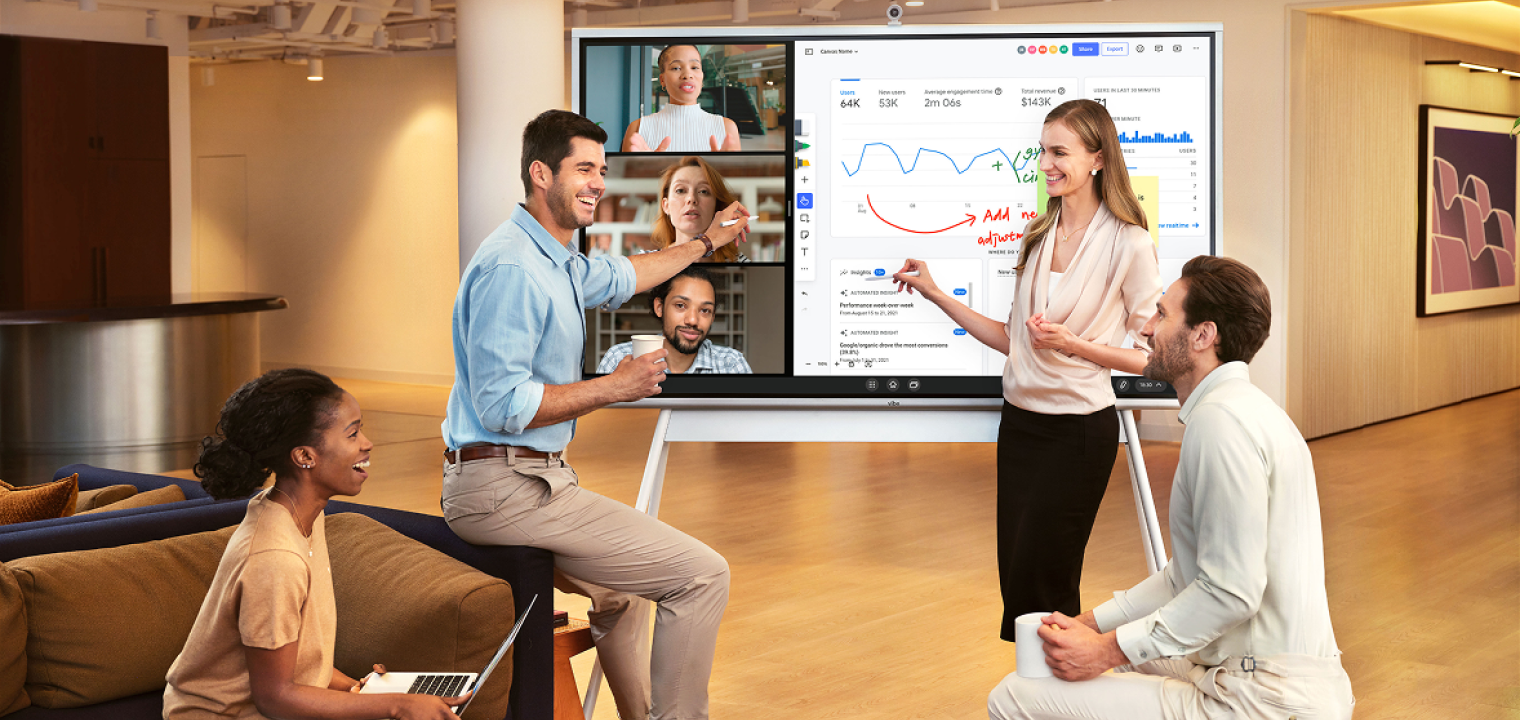 Team using a Vibe Board to conduct an engaging presentation in a hybrid meeting.
Team using a Vibe Board to conduct an engaging presentation in a hybrid meeting.Audience Engagement Strategy FAQs
1. What is audience engagement?
It’s the process of creating meaningful interactions that make people feel involved. It looks like turning listeners, viewers, or participants into active contributors.
2. What is an example of a customer engagement strategy?
Hosting a live workshop that includes polls, visual collaboration, and shared brainstorming on a smart whiteboard keeps people engaged and part of the process.
3. How can I measure whether an engagement strategy is working?
Look at both activity and outcome: return visits, watch time, shares, conversions, and audience sentiment. True engagement is about continued participation, not just clicks.



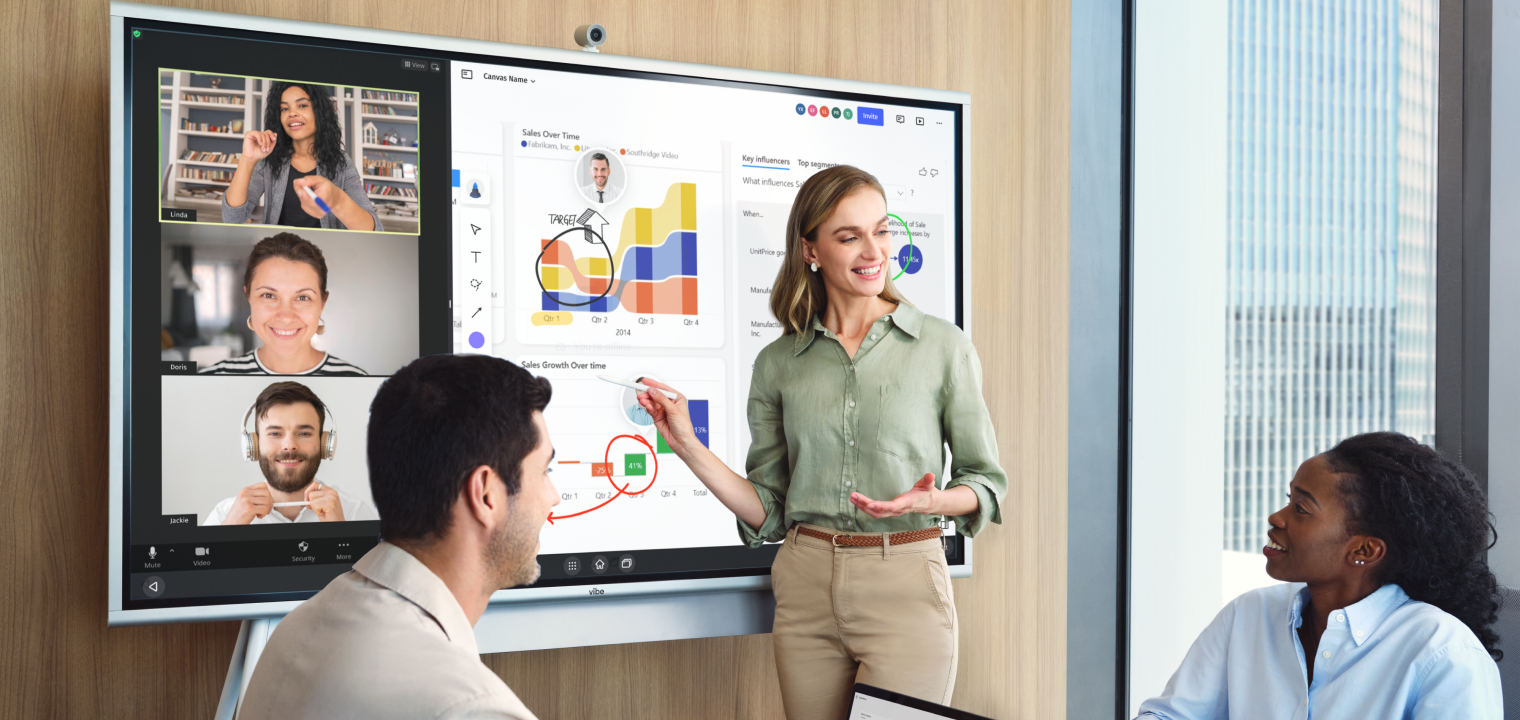
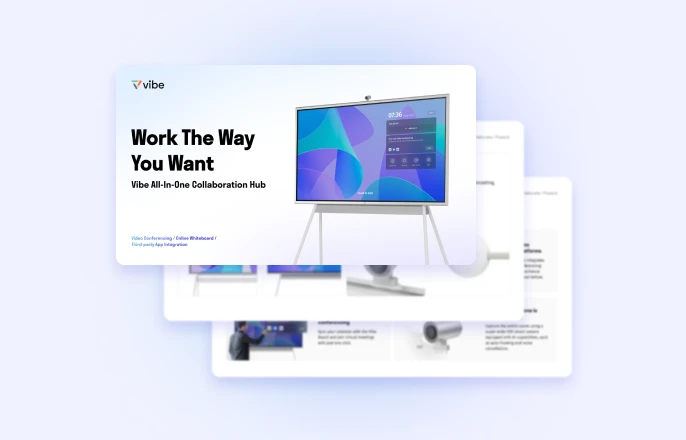



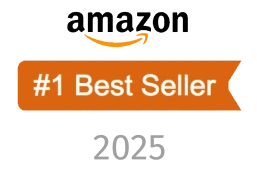
-1sbltxxq4FYxHrXrwJVLsCDNsXpqNa.webp)
-5Zp0pmSytvcuYDVs1LvuwplKuRneK0.webp)
